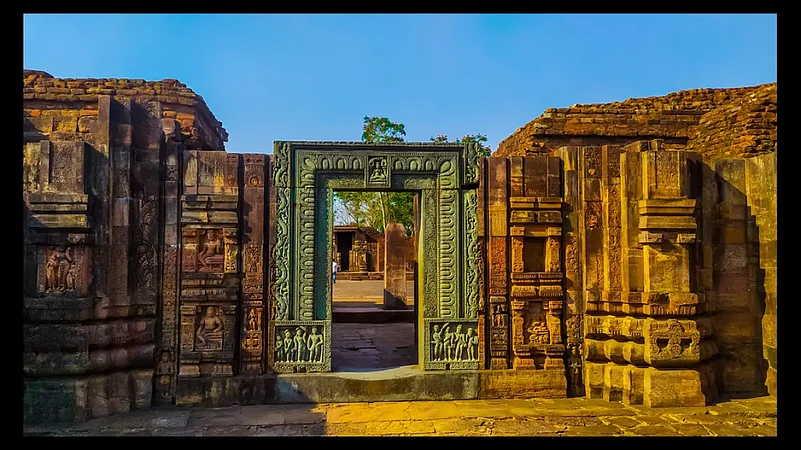Odisha (or Kalinga as it was then known as) is where war-mongering Emperor Ashoka of Magadh had a change of heart. Renouncing war and violence, he not only converted to Buddhism but ensured this religion spread far and wide. Dhauli, near the state capital Bhubaneswar, marks the spot where the emperor went through the transformation after seeing the river Daya turn red with the blood of slain soldiers.
But to discover how deeply Buddhism had taken a root in the state, you have to travel to the Buddhist sites scattered across Odisha. One of the most interesting sites is the Diamond Triangle, about 100km by road from Bhubaneswar. Consisting of three ruins, Lalitagiri, Ratnagiri and Udaygiri, span centuries, displaying the evolution of Buddhism in Odisha. The combination of mahaviharas, stupas and sculptural treasures, found here speak volumes about the architectural legacy of the state.
The oldest among the three is Lalitagiri, which dates back to the first century BC. A Mahastupa perched on a hillock overlooks the surrounding stupa complex, brick monasteries and a chaitya hall. It is said that caskets containing Buddha’s tooth relics where found at the Mahastupa. The museum displays sculptures reflecting the Mahayana style, including large statues of Buddha, Bodhisatta and Jambhala. It is said that many of the statues found here bear a resemblance with those found in Java and other south-east Asian countries.
Udaygiri (not to be confused with the hill of the same name near Bhubaneswar) and Ratnagiri belong to a later period. Udaygiri, earlier known as Madhavapura Mahavihara, is located in the middle of horse-shoe shaped hill. Steps lead to the top of the hill. Do not miss a panoramic view of the countryside from here. A huge statue of Lokesvara holding a lotus stands at the base of the hill. Ruins of monasteries, brick stupas, and a step well are some of the key attractions here. Richly carved statues of Dhyani Buddha, Bodhisattva, Avalokiteshvara, Jambhala and Heruka, lie among the ruins.
According to historians, Ratnagiri, founded in sixth century, along with Udaygiri, was a seat of Tantric Buddhism. This centre flourished until 12th century. Excavations have revealed ruins of sprawling monasteries, rows of votive stupas, shrines and richly sculpted doorways and statues. The man monastery complex contains a large statue of Buddha in the Bhumisparsha mudra. On either side stand are statues of Padmapani and Vajrapani. The courtyard serves as an open-air gallery where Buddha heads and other statues are on display.
Getting there: The Diamond Triangle stands about 100km north-east of Bhubaneswar. It is possible to see the trio on a day visit but you have to start early in the morning. We suggest you go to Lalitagiri first, the furthest among the three, and then Udaygiri and Ratnagiri, which lie on the same route. The trio can also be visited from Cuttack. For more details, contact Odisha Tourism .
















